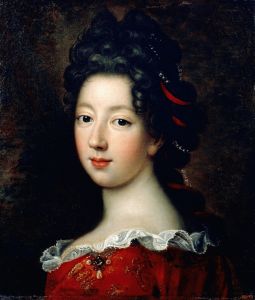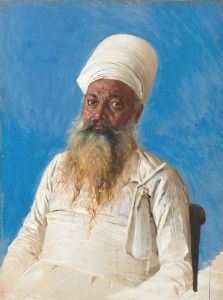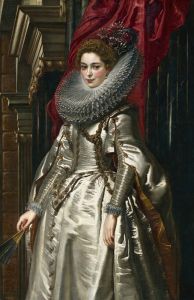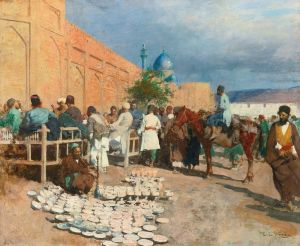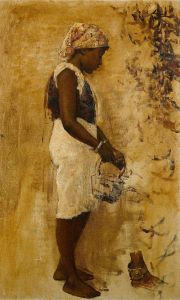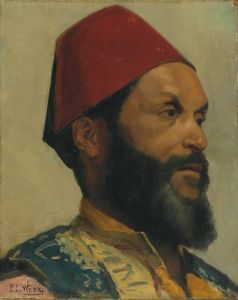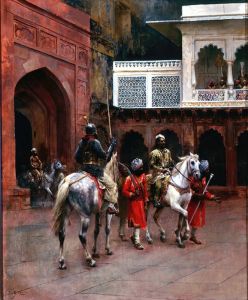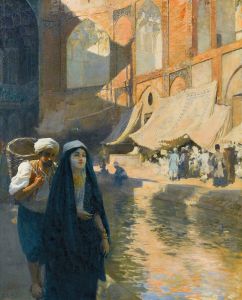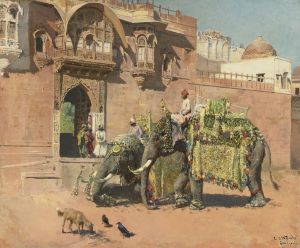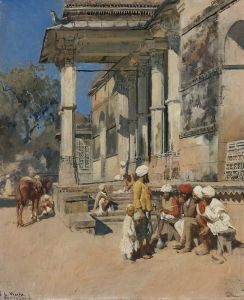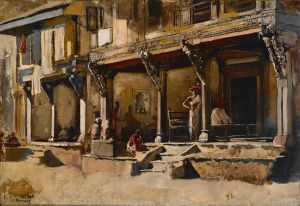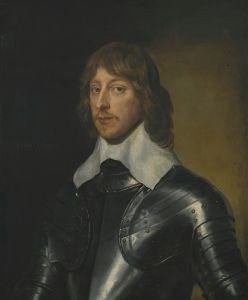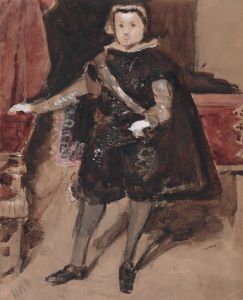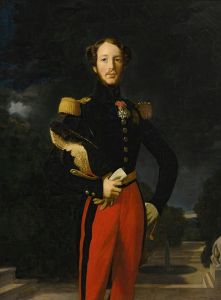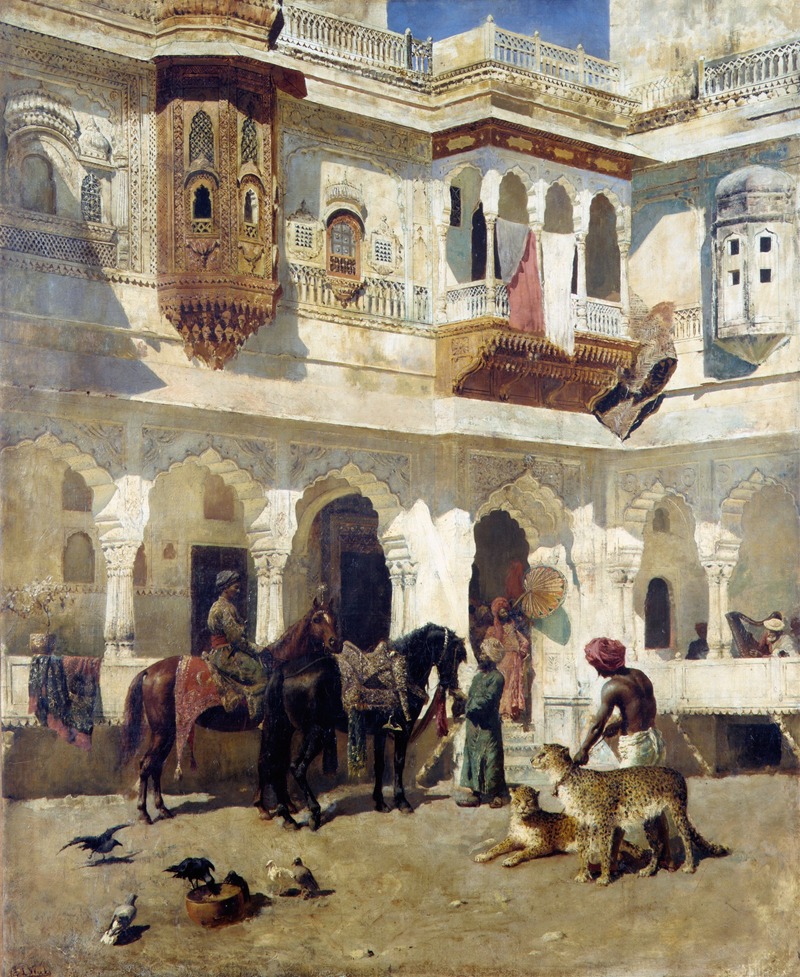
The Rajah Starting on a Hunt
A hand-painted replica of Edwin Lord Weeks’s masterpiece The Rajah Starting on a Hunt, meticulously crafted by professional artists to capture the true essence of the original. Each piece is created with museum-quality canvas and rare mineral pigments, carefully painted by experienced artists with delicate brushstrokes and rich, layered colors to perfectly recreate the texture of the original artwork. Unlike machine-printed reproductions, this hand-painted version brings the painting to life, infused with the artist’s emotions and skill in every stroke. Whether for personal collection or home decoration, it instantly elevates the artistic atmosphere of any space.
Edwin Lord Weeks was an American artist known for his Orientalist paintings, which often depicted scenes from his travels in the Middle East, North Africa, and South Asia. One of his notable works is "The Rajah Starting on a Hunt," which exemplifies his fascination with the exotic and the romanticized portrayal of Eastern cultures.
"The Rajah Starting on a Hunt" captures a moment of regal splendor and cultural richness. The painting depicts a scene set in India, where a Rajah, or Indian prince, is preparing to embark on a hunt. This subject matter was a popular theme in Orientalist art, as it allowed Western artists to explore the opulence and ceremonial aspects of Eastern aristocracy. Weeks, like many of his contemporaries, was drawn to the vibrant colors, intricate details, and the perceived exoticism of such scenes.
In the painting, the Rajah is typically portrayed mounted on an elaborately adorned elephant, a symbol of power and prestige in Indian culture. The elephant is often depicted with richly decorated textiles and ornaments, emphasizing the wealth and status of the Rajah. Surrounding the central figure, there are usually attendants and other figures, possibly including soldiers or servants, who accompany the Rajah on his hunting expedition. These figures add to the narrative of the painting, highlighting the communal and hierarchical aspects of such events.
Weeks was known for his meticulous attention to detail and his ability to capture the nuances of light and color. In "The Rajah Starting on a Hunt," he likely employed a rich palette to convey the lushness of the landscape and the splendor of the Rajah's attire. The use of light would have been carefully considered to enhance the drama of the scene, perhaps highlighting the textures of the fabrics and the sheen of the elephant's skin.
The painting reflects Weeks' broader artistic interests and his commitment to portraying the cultures he encountered with a sense of authenticity and respect. While his work is part of the Orientalist tradition, which has been critiqued for its often romanticized and stereotypical depictions of the East, Weeks' paintings are also valued for their artistic merit and their role in documenting the visual culture of the regions he visited.
Edwin Lord Weeks' travels were extensive, and he spent significant time in India, which provided him with firsthand experiences and inspiration for his work. His paintings, including "The Rajah Starting on a Hunt," serve as a visual record of his journeys and his engagement with the diverse cultures he encountered. Through his art, Weeks contributed to the Western understanding of Eastern societies, albeit through the lens of Orientalism, which was prevalent in his time.
Overall, "The Rajah Starting on a Hunt" is a testament to Weeks' skill as a painter and his ability to capture the grandeur and complexity of the scenes he chose to depict. The painting remains a significant example of Orientalist art and continues to be appreciated for its aesthetic qualities and its historical context.





